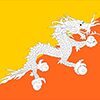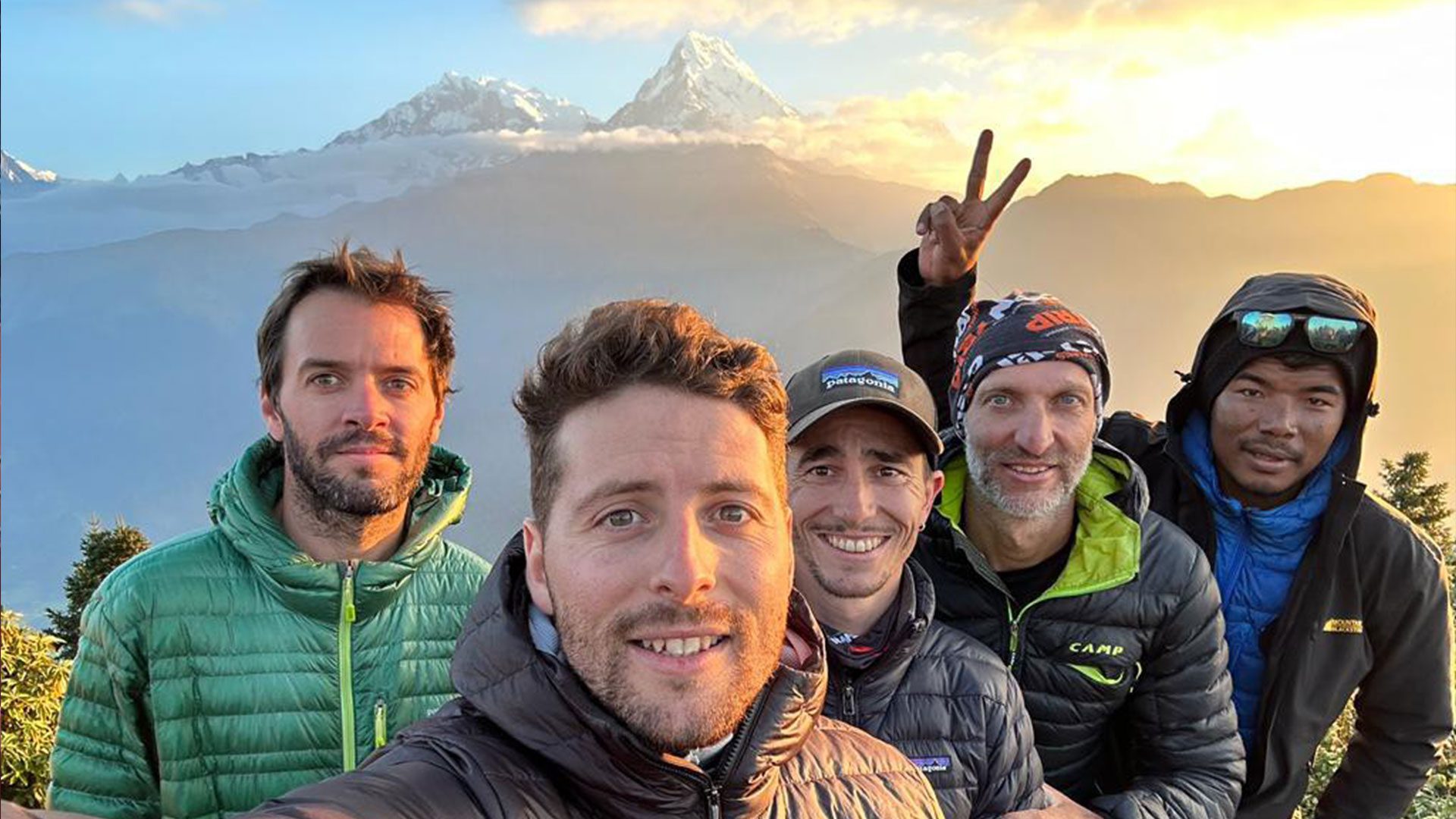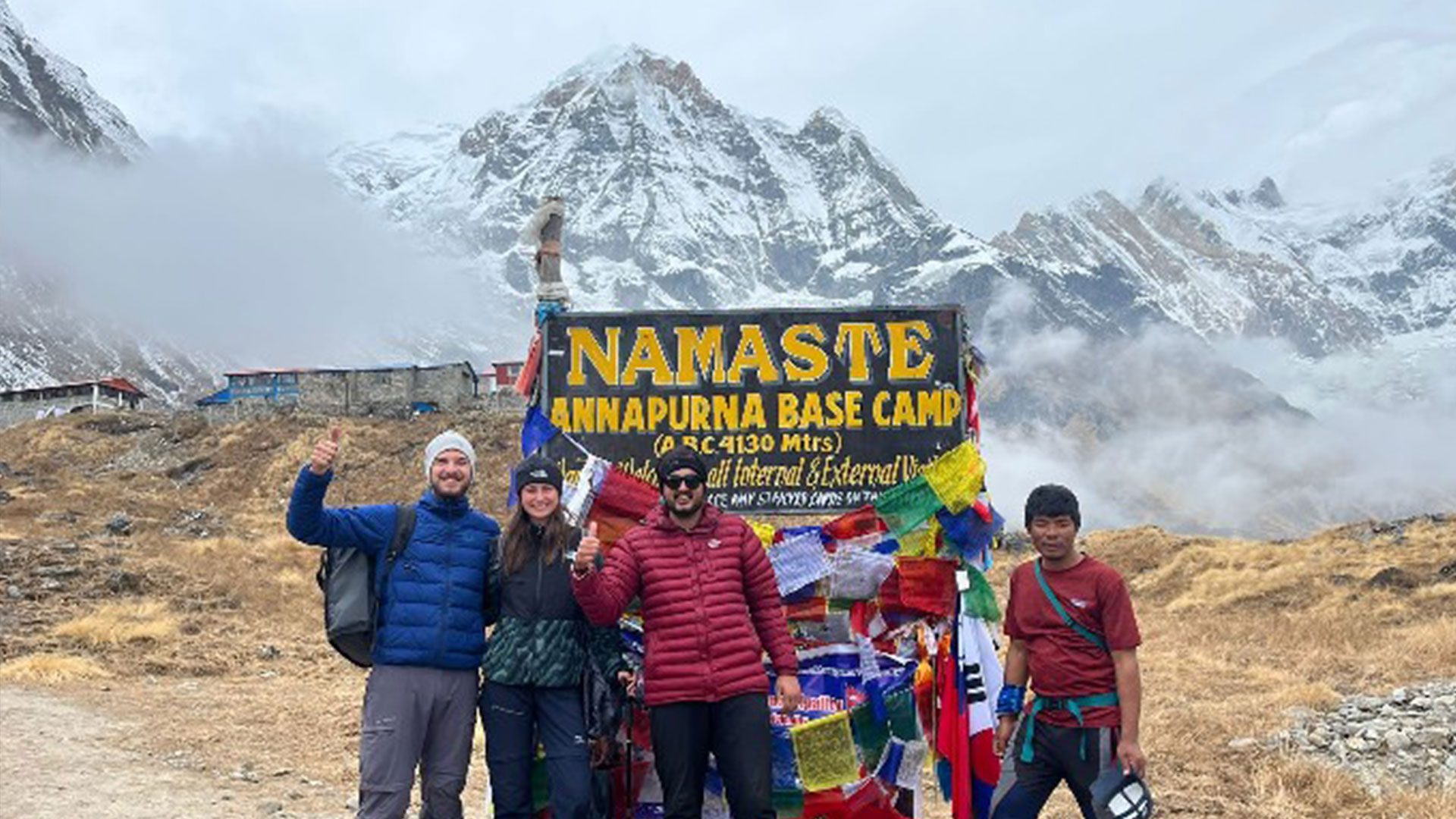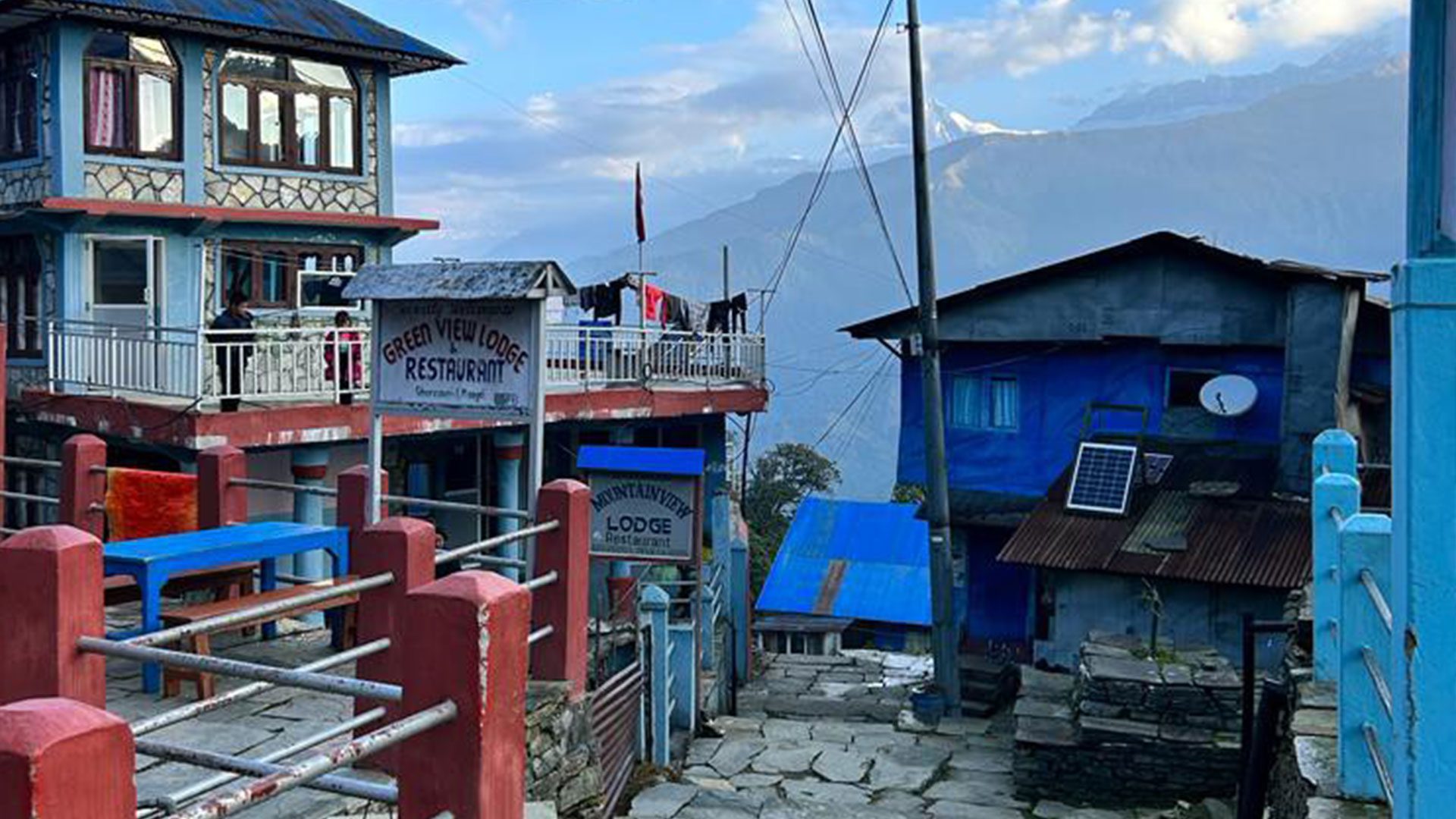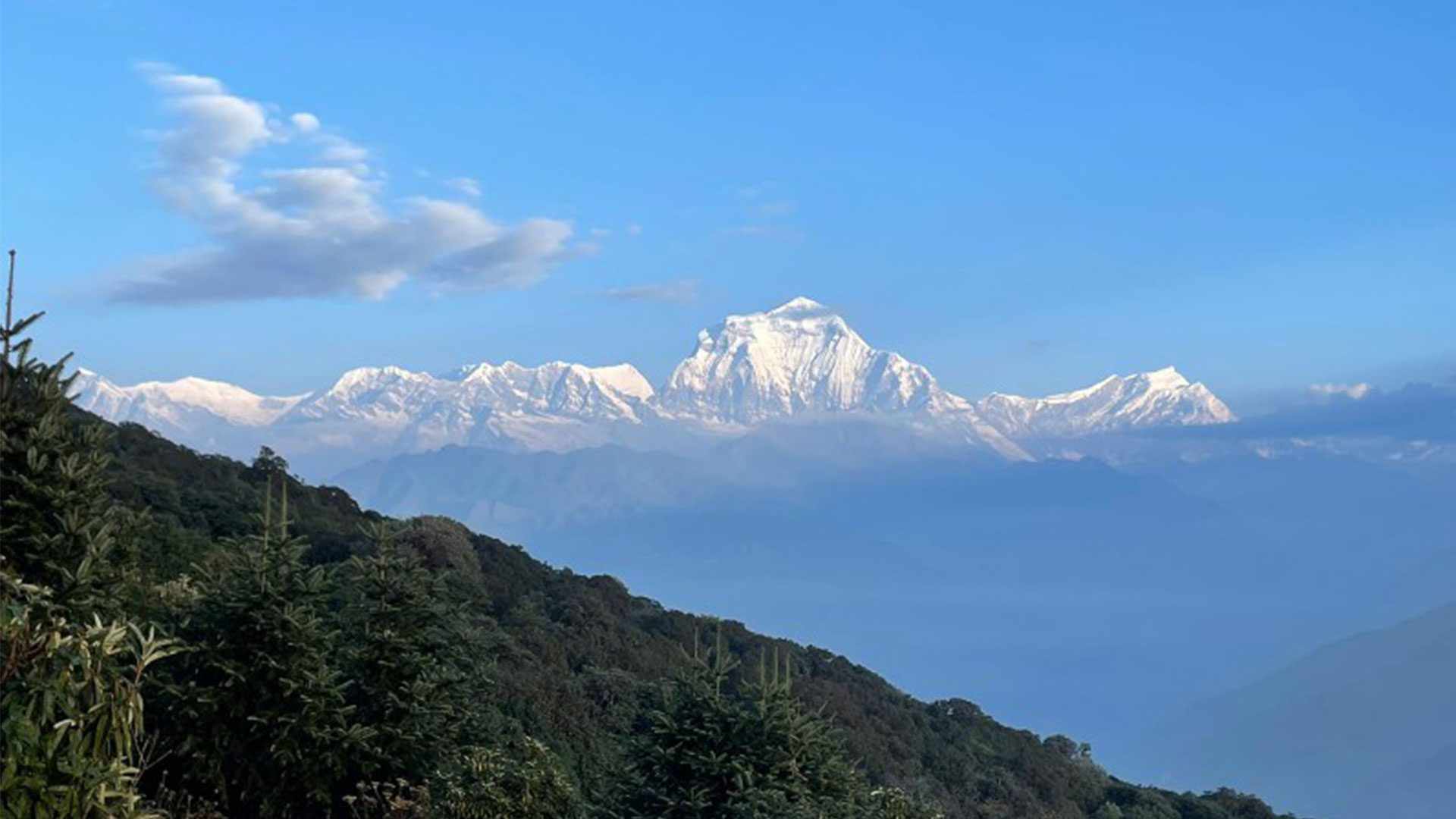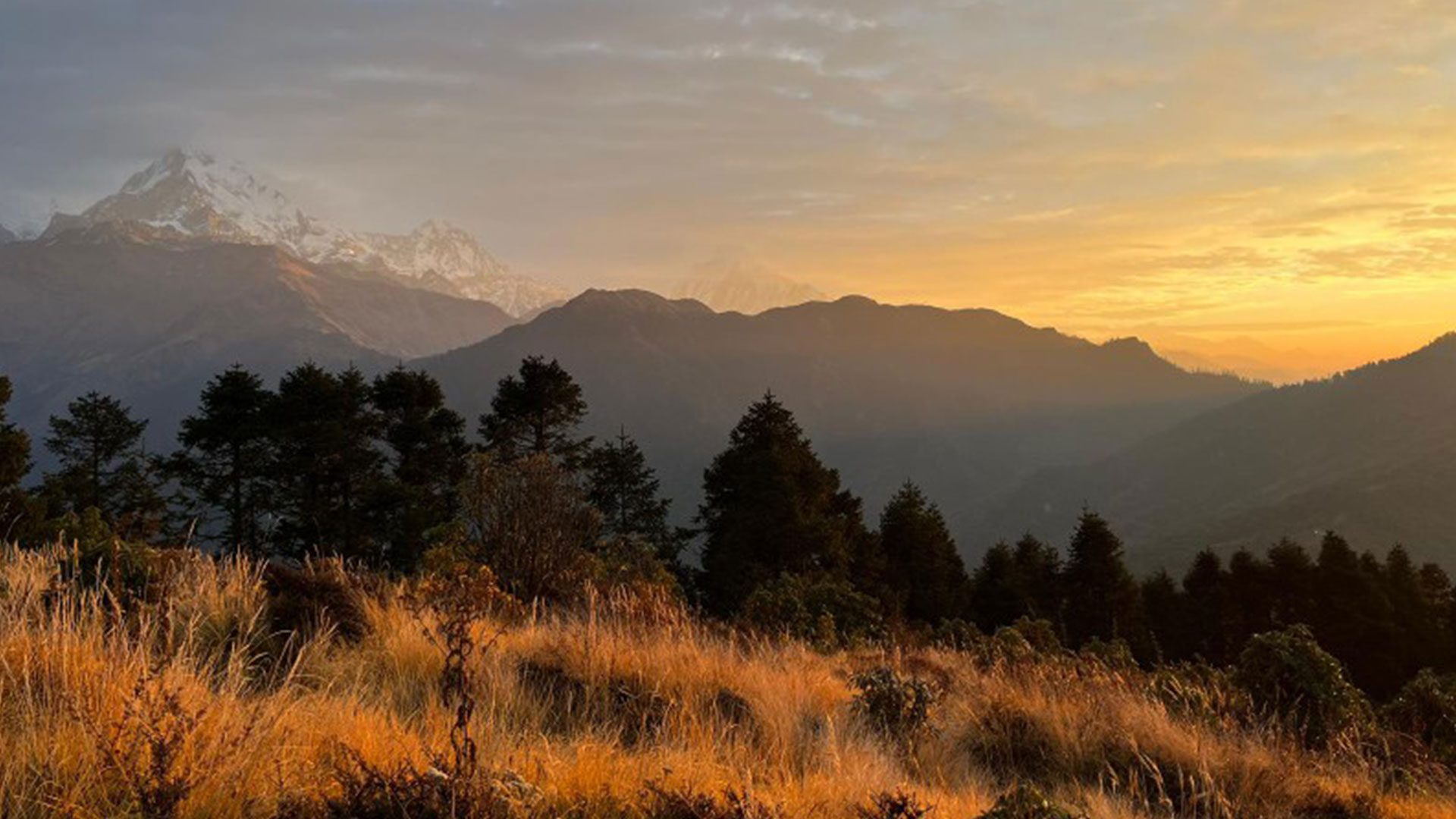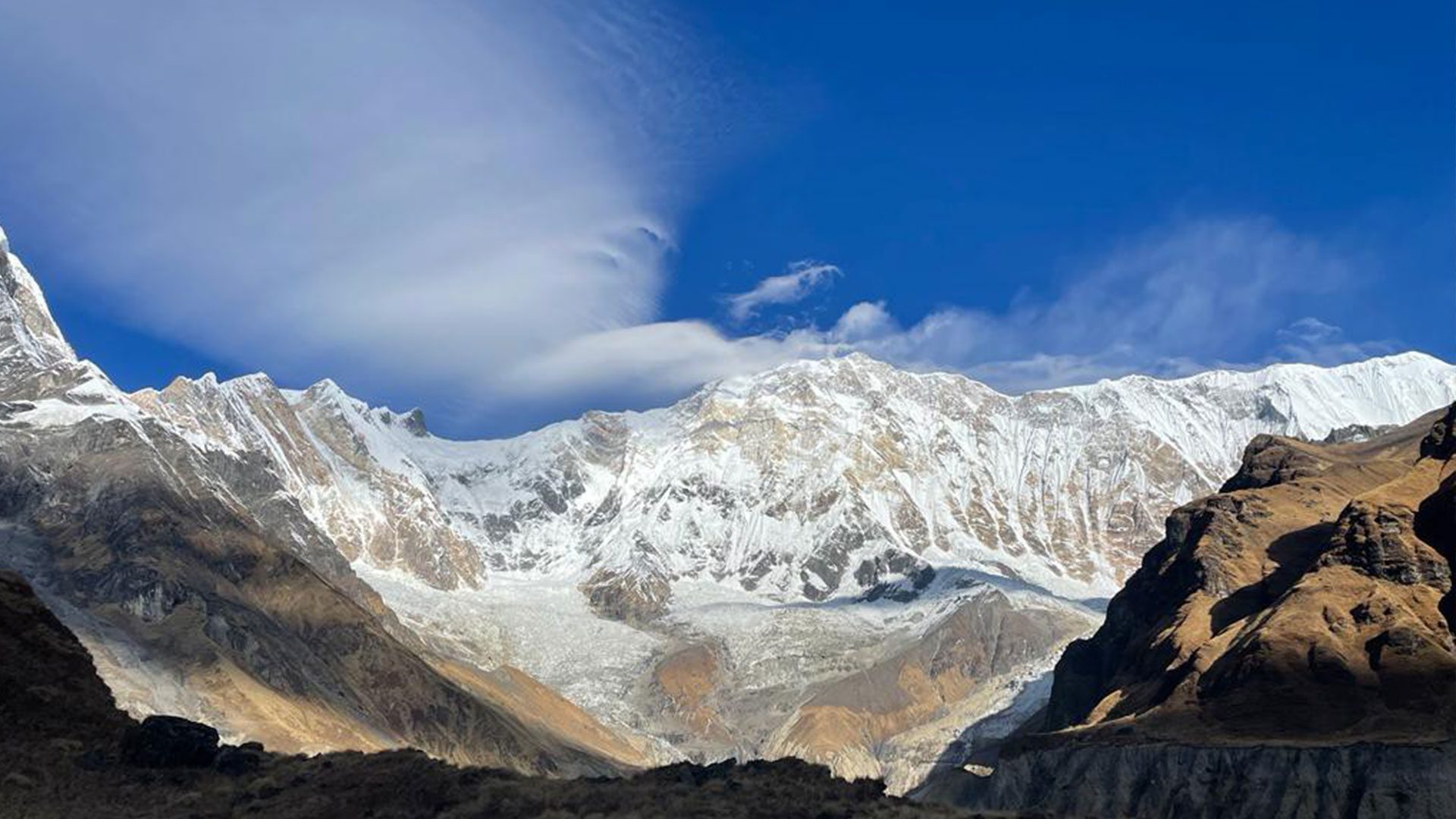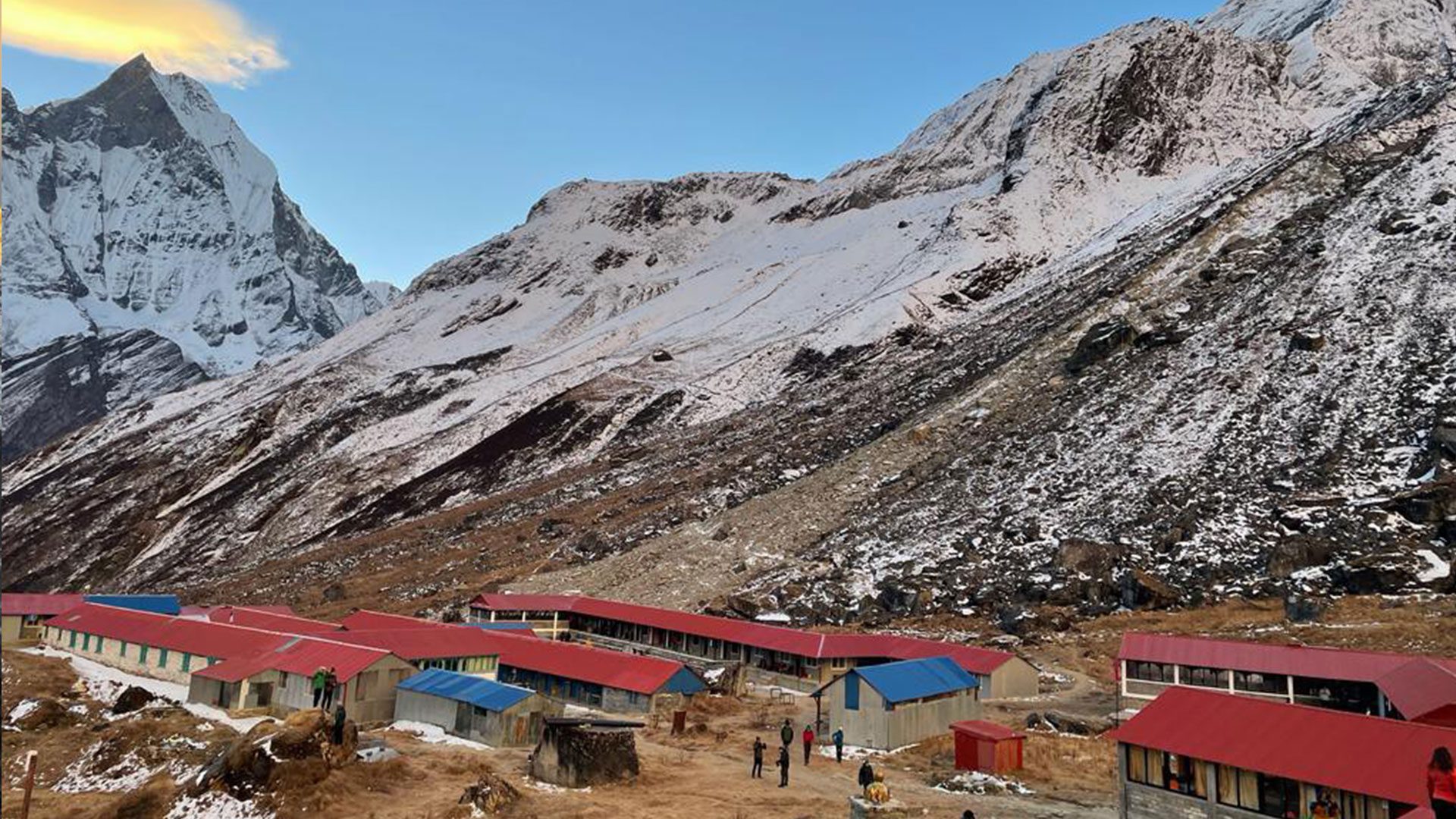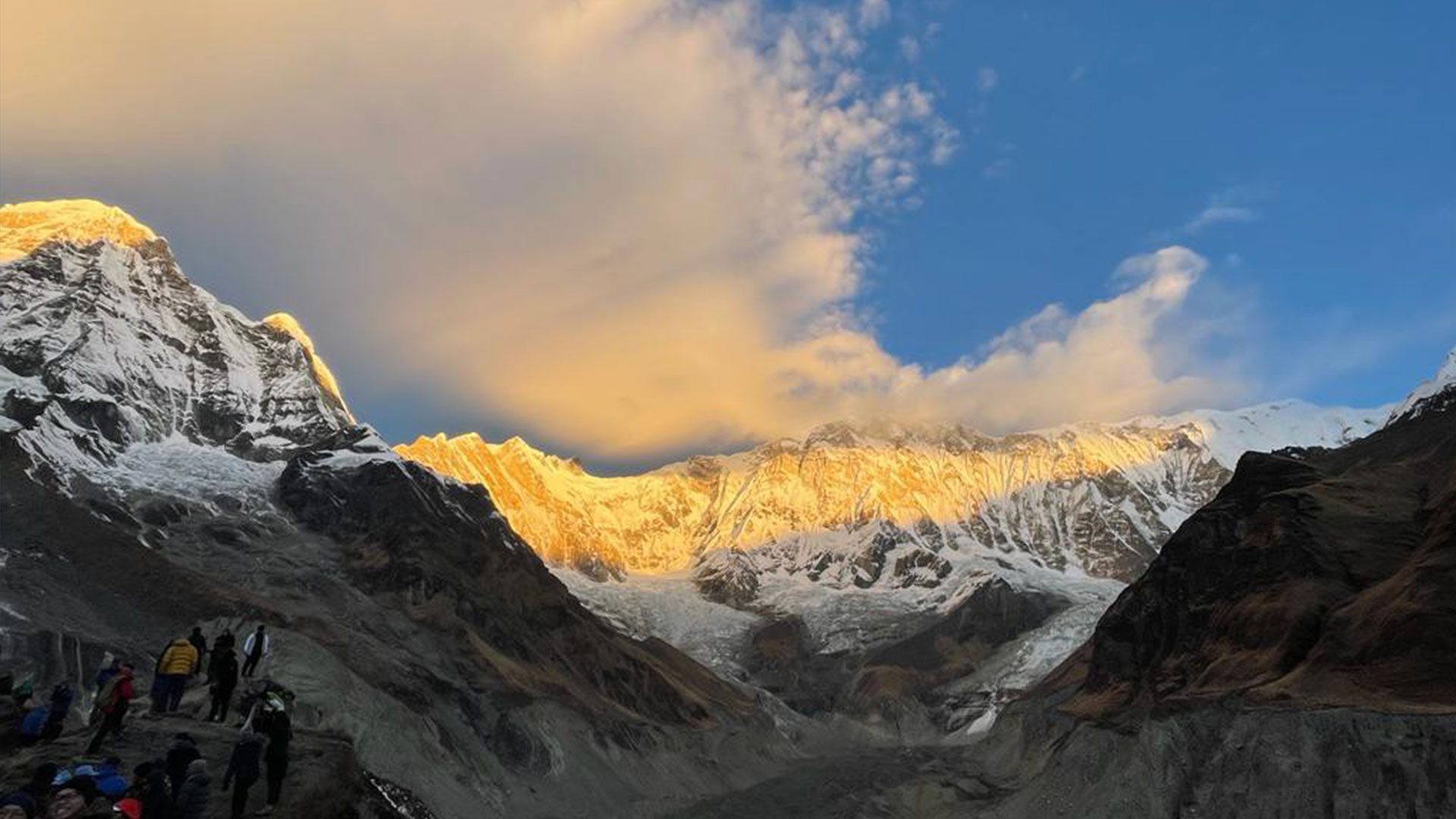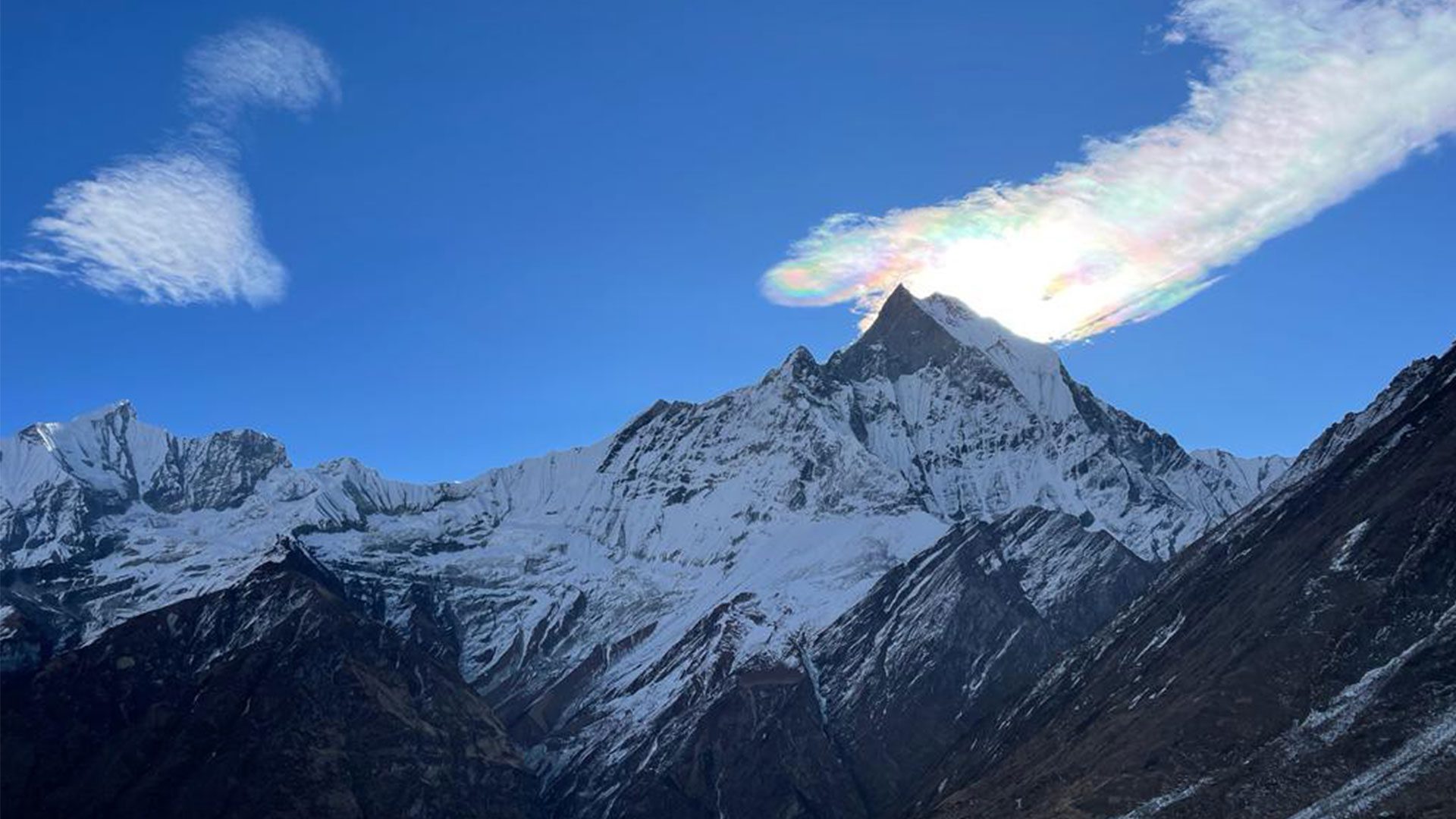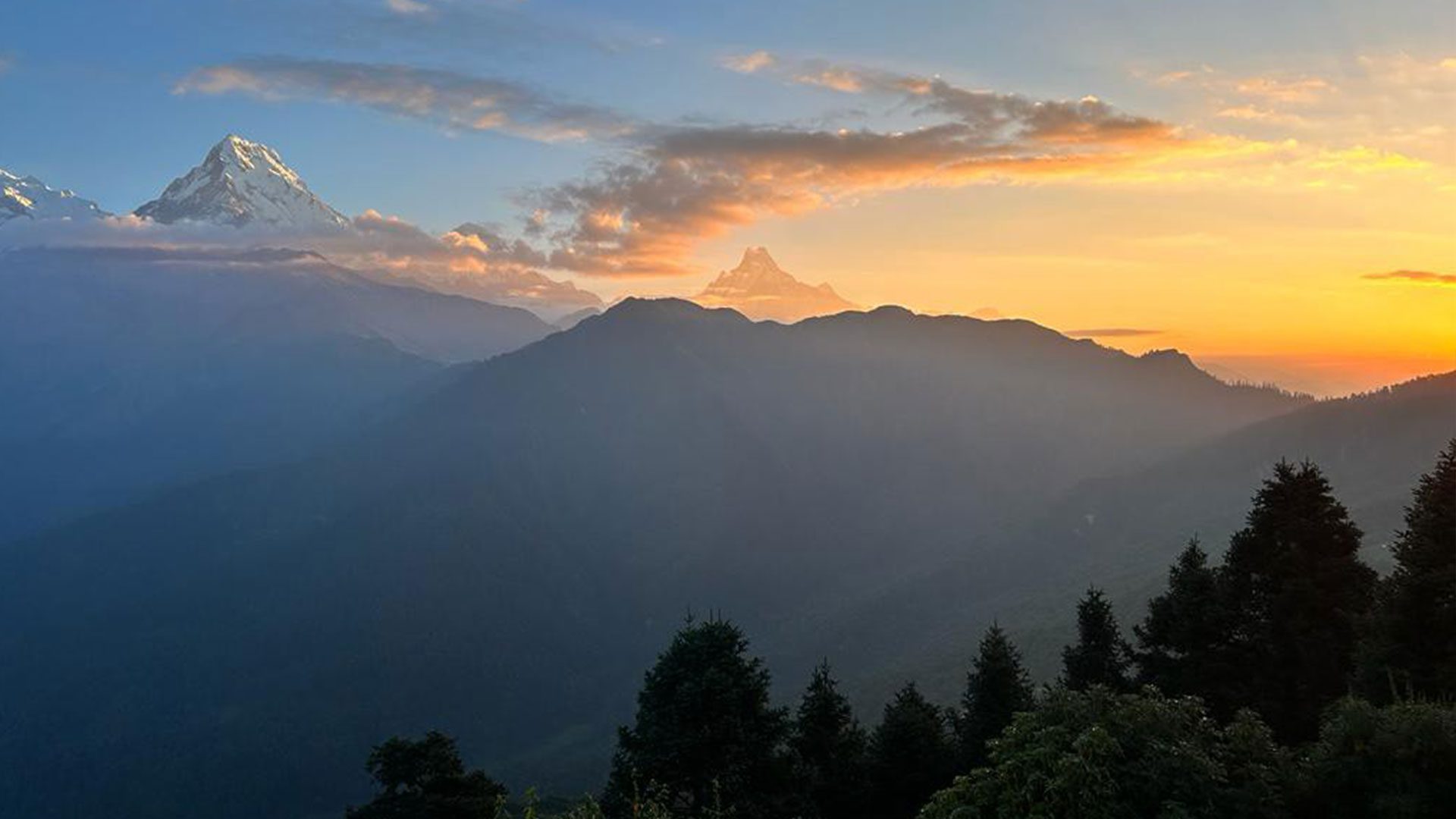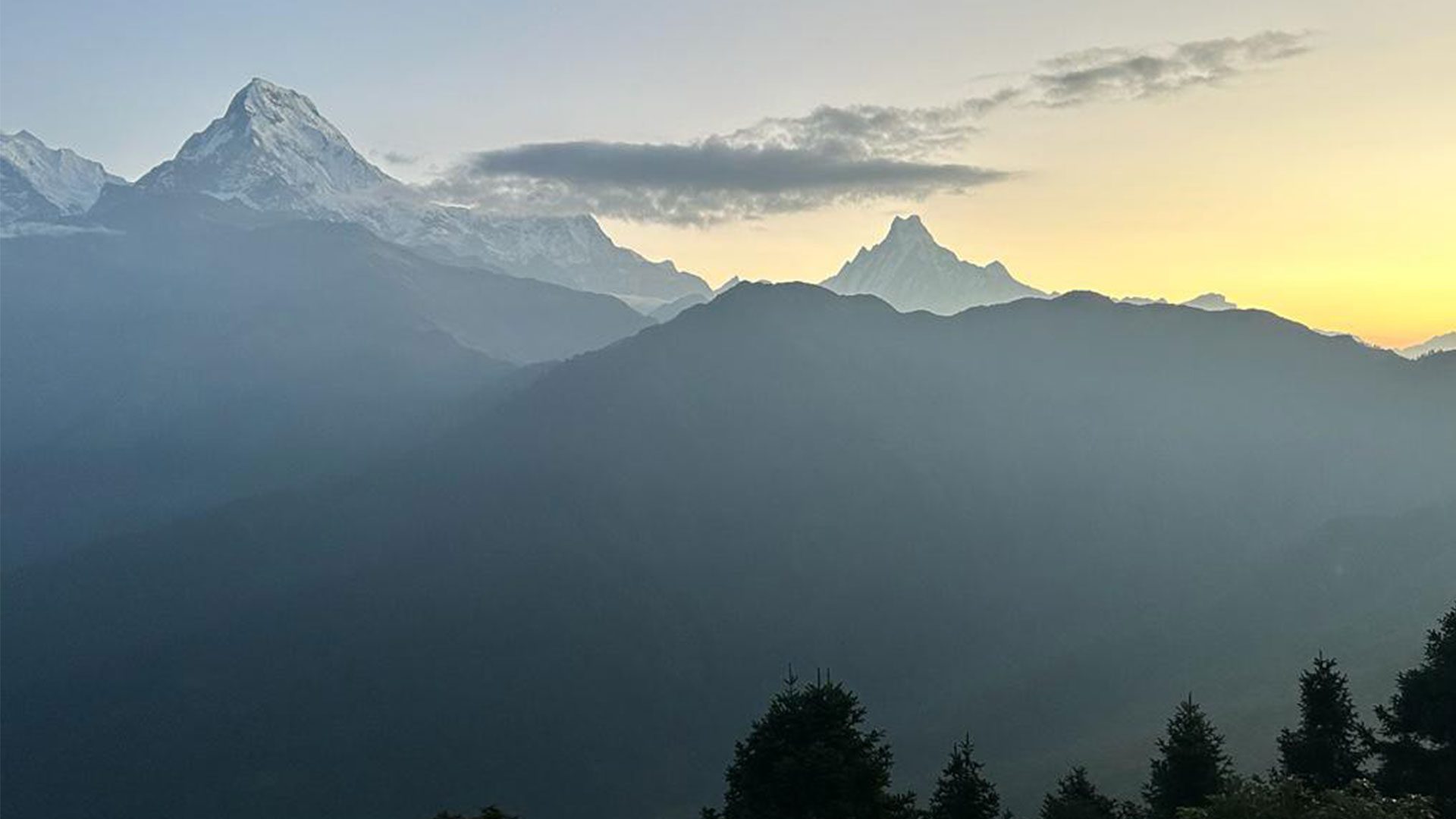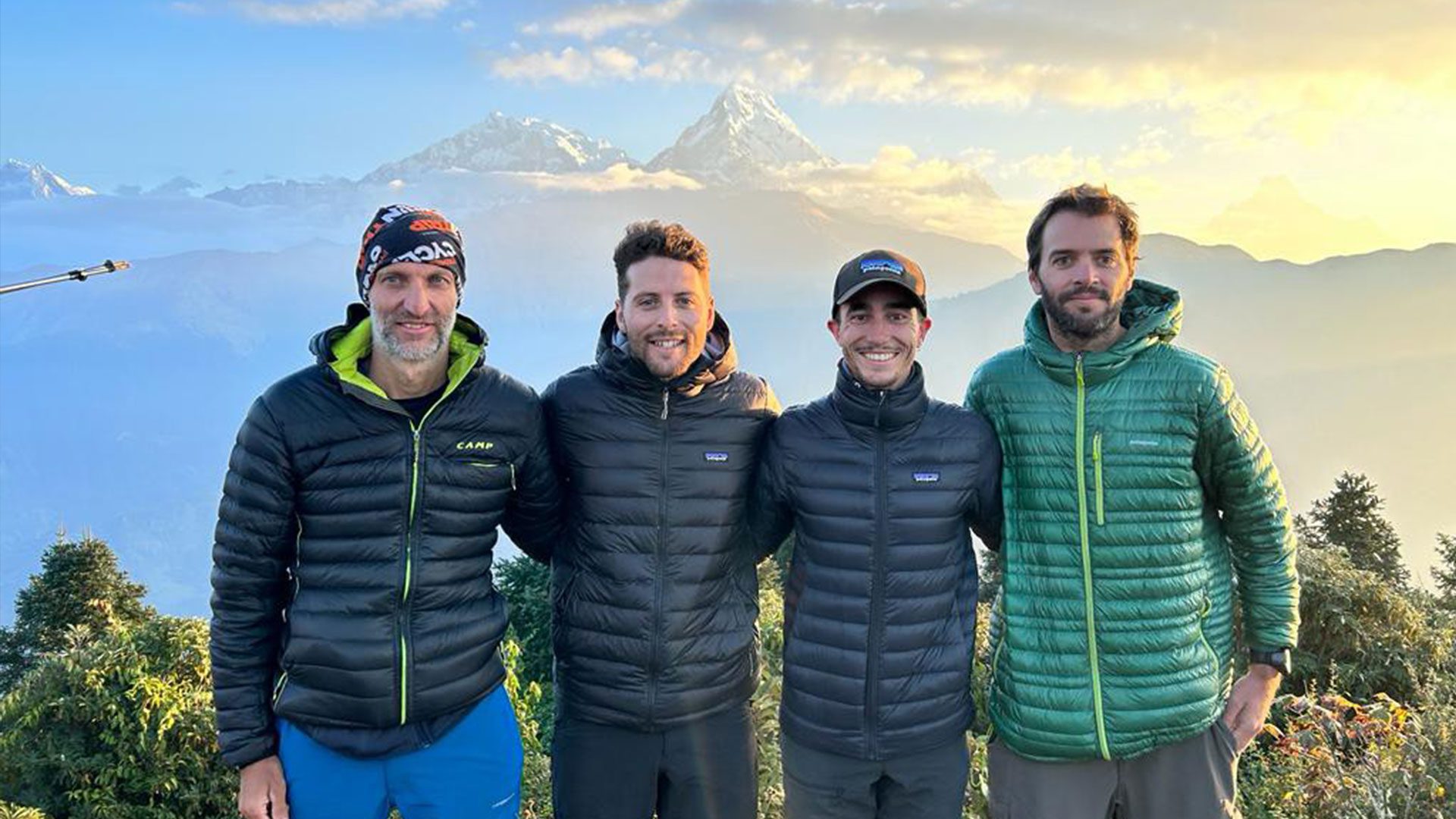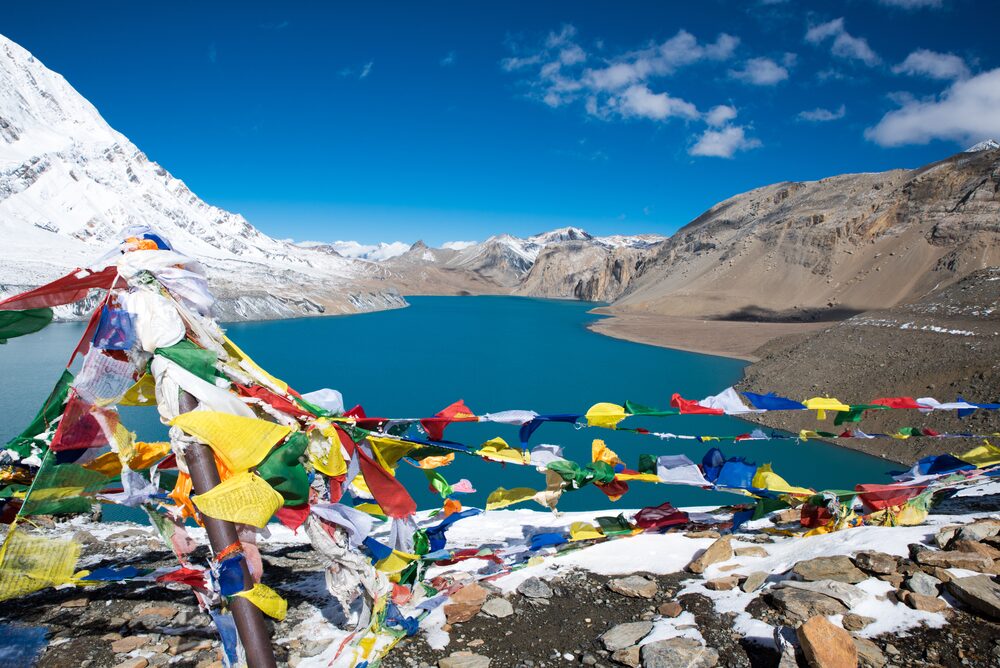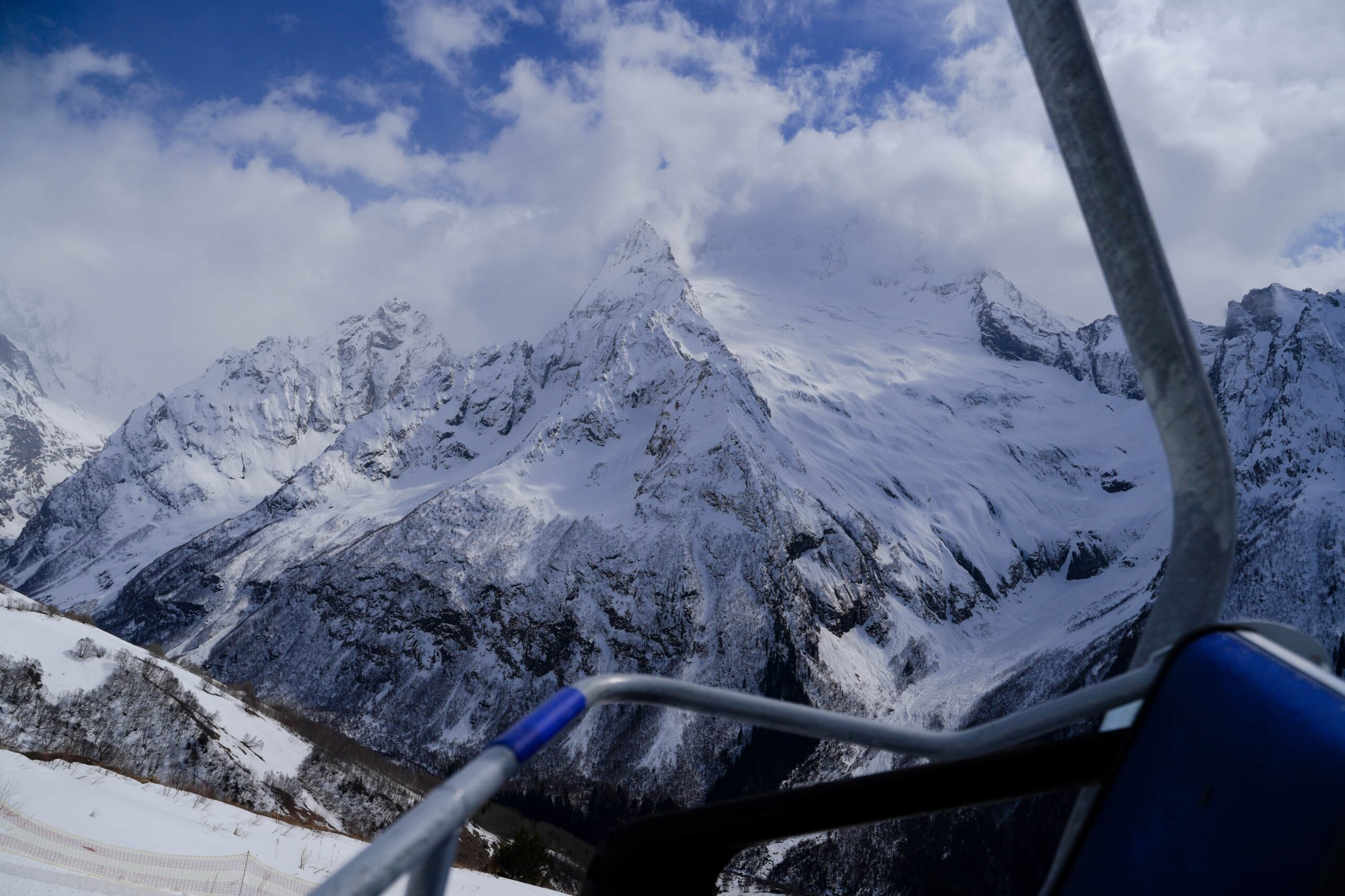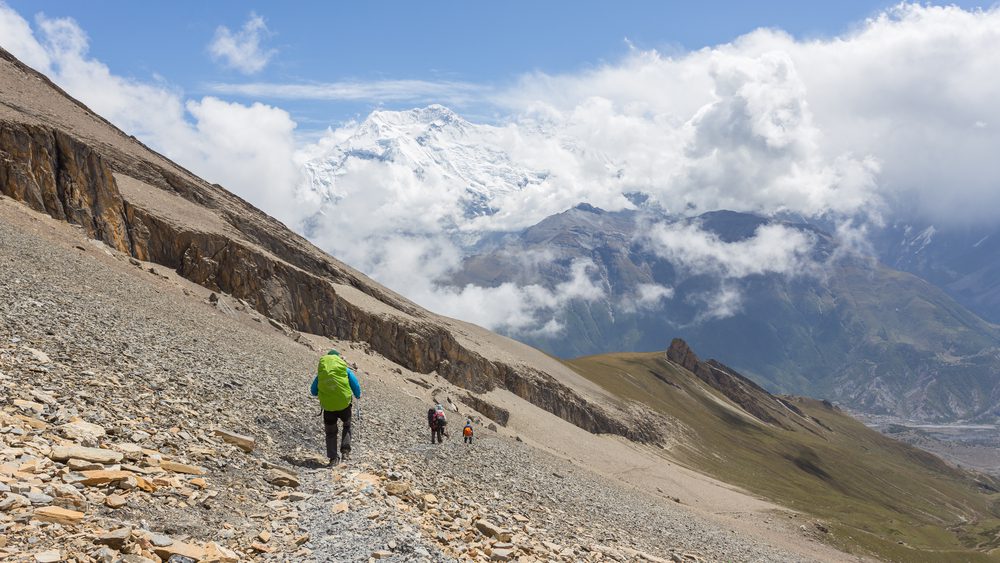Annapurna Base Camp with Poon Hill Trek 9 Days
5(49)
Trip Facts
Annapurna Base Camp with Poon Hill Trek 9 days Overview
Annapurna Base Camp with Poon Hill Trek 9 days is one of the favorite trekking regions of Nepal and is included in the Annapurna Conservation area. It is also a most enchanting trip. The period of the Trek is 9 days, during which the tourists can enjoy the different views of the lovely Annapurna peak massif and the grander peaks of Machapuchare, Hiunchuli, etc., with different appearances and topography. The trek will pass through heavy jungles, native villages, and other charming topographical changes into the different beauties of scenery in its vicinage. The trip will leave you in possession of the quiet and restful memories of the lovely mountains for all time with you.
Annapurna Base Camp with Poon Hill Trek 9 days begins with a drive to Pokhara. This is a lively city, from which much of the outdoor sports are started and also here, viewed from the lake, the different charming sites of the mountains and lakes can be enjoyed. The trip to the starting point, Nayapul, takes you through numerous villages, where you are enabled to view the native life. At Nayapul, which is the starting point of the trek, from then on while descending you will be come to clearer views of the spot you are going to, i.e. the Annapurna.
Other impressive mountains including Machapuchhre will accompany you along the route and serve as a constant reminder of how lucky you are. The trek to the Annapurna Base Camp presents you with the opportunity to stop in popular villages like Ghorepani, Tadapani, Chhomrong, Himalaya and many others.
The route to Annapurna Base Camp with Poon Hill Trek is breathtaking; you traverse gorgeous rhododendron forests, stunning glaciers, and beautiful meadows situated at lower altitudes. You also get to enjoy the holy sanctuary. Then you will finally reach your destination, Annapurna Base Camp via Machhapuchhre Base Camp. There, you can enjoy the beautiful and extraordinary 360-degree views of Annapurna Range, Machhapuchhre also known as Fishtail, and other surrounding peaks. Capture the breathtaking views with your camera and after enjoying the spectacular view, you can descend to the lower altitudes villages such as Bamboo Village, Jhinu Danda, and Siwai, which is the final part of your journey primarily follows the Modi River. Then you can take a private jeep or local bus and drive back to Pokhara. Once, you reach your hotel, you can take a rest there.
Your journey to Annapurna Base Camp promises incredible views, authentic cultural experiences, and a physical challenge. This is the reason that makes your trek more rewarding. At the end, all of the things you seen and experienced remains with you forever.
This journey will leave you with unforgettable memories of the magnificent Himalayas, regardless of your experience level.
So, shall we start this amazing trek to the Annapurna Base Camp (ABC)?Let’s begin the journey together!
Trip Highlights
- Incredible panoramic views of the mountain peaks like Annapurna I, Annapurna South, Machhapuchhre (Fishtail), and Dhaulagiri mountain ranges at sunrise in Ghorepani Poon Hills.
- Annapurna Base Camp, which is situated at 4,130 meters (13,550 feet) from where you can enjoy the 360-degree views of the Annapurna range and surrounding peaks.
- Machhapuchhre Base Camp (MBC), which is situated at an altitude of 3,700 meters (12,140 feet) from where you get an up-close view of Machhapuchhre (6,993 meters), considered sacred by the locals.
- Enjoy the vast forests of rhododendron trees around the villages like Ghorepani and Bamboo.
- Experience the culture and traditions of Gurung, Magar and Tamang people and their local lifestyles.
- Enjoy the local festivals of Nepal such as Dashain and Tihar.
- Explore the flora and fauna of the Annapurna Region of Nepal.
Itinerary
Your Journey, Step by Step
Trek from Tikhedhunga to Ghorepani (2,860m) – 6-7 hours
You will start our trek to Ghorepani after having morning breakfast in Tikhedhunga. As you descend, you will pass through several villages like Ulleri, and Banthanti. You can enjoy the beautiful views of the surrounding hills and snow-capped peaks in the early morning light as you travel through terraced fields, small streams, and lush forests. The route offers breathtaking views of the Annapurna Range and the Machapuchare (Fish Tail). The forest takes you for a cool and pleasant walking environment. As you go through dense rhododendrons, with breathtaking views of the surrounding mountains, you will arrive in Ghorepani, which is a popular and scenic village in the Annapurna region of Nepal. You can enjoy the spectacular views of the best sunrises.
Stay overnight in Ghorepani.
Hike to Poon Hill (3,210m) & Trek to Tadapani (2,630m) – 6-7 hours
On this day, you will start your hike to Poon Hill early in the morning around 4’o clock. It takes you 45 min – 1 hour to get there. You will get to experience the famous and most beautiful sunrises over the Himalayas, with spectacular views of the Annapurna Range, Dhaulagiri, and Machapuchare (Fish Tail Peak). With an amazing and magnificent view, you can take great photographs. After enjoying such overwhelming views you can descend to Ghorepani for breakfast.
Then you can ascend your journey to Tadapani. As you go ahead, you will pass through rhododendron forests and scenic landscapes. On the way, you can go through several villages like Chitre and Kokhethanti. There, you will get to experience the cultures of Gurung and Magar people and a glimpse of the traditional way of life. As you go through the forests, you will reach Tadapani. This beautiful village offers breathtaking views of iconic peaks in the Annapurna range, including Machapuchare (Fish Tail Peak), Annapurna South, and Hiunchuli. Then you can settle in the available teahouses and take a good rest.
Stay overnight in Tadapani.
Trek from Tadapani to Chhomrong (2,170m) – 5-6 hours
Start your trek after having breakfast in Tadapani. You start the day with a slow descent through a beautiful forest with spring-blooming rhododendron trees. As you go ahead, you will cross the suspension bridge in the Kimrong Khola and experience scenic views of the surrounding mountains, and the Machapuchare (Fishtail) peak. After hours of trekking, you will reach Chhomrong, which is a peaceful, picturesque village with breathtaking vistas, and an essential stop for hikers traveling the Annapurna Circuit. It offers village offers stunning views of the surrounding mountains, including Machapuchare (Fishtail), Annapurna South, and Hiunchuli.
You can stroll around the village to interact with the locals.
Stay overnight in Chhomrong.
Trek from Chhomrong to Himalaya (2,920m) – 6-7 hours
You will start your trek from Chhomrong after having breakfast. On the way, you will pass through thick rhododendron forests that will lead you to the tiny community of Sinuwa (2,360 meters) and then slowly descend to Chhomrong Khola. The route gets rougher and more difficult from Sinuwa. After descending through bamboo trees, you’ll reach Bamboo, which is a little community that makes a nice place to stop. As you continue climbing through the thick forest, the vistas of the mountains get more noticeable. The sound of the river and the surroundings make a peaceful environment. Then after 6-7 hours of trekking, you will reach in Himalaya, which is a small village from where incredible views of mountains can be enjoyed.
Stay overnight in Himalaya.
Trek from Himalaya to Annapurna Base Camp (4,130m) via Machhapuchhre Base Camp (3,700m) – 6-7 hours
On this day, you will be trekking to Annapurna Base Camp. After having a delicious breakfast, you will slowly ascend to beautiful forests of rhododendron and oak. The trail offers an open view of the surrounding mountains like Annapurna South creating a peaceful walk. As you go ahead, you will start to see Machhapuchhre and other surrounding peaks. You can take a quick rest there.
Then you will start to ascend to Annapurna Base Camp, which is an awe-inspiring destination, offering panoramic views of the entire Annapurna range. The surrounding environment includes glaciers, alpine meadows, and stunning rhododendron forests at lower elevations, and the sanctuary is considered holy by the locals. You may encounter wildlife such as the Himalayan tahr (wild goat), langur monkeys, deer, and a variety of bird species, including the Danphe (Himalayan monal), Nepal’s national bird, and explore the flora along the way. Then finally, you will reach Annapurna Base camp. The experience of being surrounded by such a vast array of snow-capped peaks in the Annapurna Sanctuary makes the trek worth every step. You can enjoy the spectacular views of Annapurna I (8,091m), Annapurna South, Machhapuchhre, Hiunchuli, and Tent Peak. There are many teahouses available in the base camp. After enjoying the stunning views, you can take a rest in the available teahouses.
Stay overnight in Annapurna Base Camp.
Trek from ABC to Bamboo (2,310m) – 6-7 hours
Start your trek early in the morning from ABC. As you go ahead, you will take a slow and steady descent through a range of environments, such as wooded regions, terraced farms, and pleasant towns. As you descend, you will pass through Machhapuchhre Base Camp and the Himalaya. You will trek through high-altitude terrain to greener forested areas. Then continue to descend through lush forests of rhododendrons and bamboo, passing several small villages. The trail follows through thick bamboo forests and you’ll pass by little areas, streams, and stunning terraced fields. Then hours of trekking, you will arrive at Bamboo Village, which is a small village located in a calm area encircled by thick bamboo forests. Enjoy your stay in the teahouses of Bamboo Village.
Stay overnight in Bamboo.
Trek from Bamboo to Jhinu Danda (1,780m) – 5-6 hours
You will start your trek to Jhinu Danda after a delicious breakfast in Bamboo. Along the route, you will pass through several villages like Sinuwa and Chhomrong. You’ll encounter dense rhododendron forests, with plenty of opportunities to spot wildlife, including monkeys and birds terraced fields, and waterfalls, and get to experience the views of the Annapurna Range in the distance. After trekking for some hours, you will reach Jhinu Danda, which is a small village located along the Annapurna Base Camp trek route, offering stunning views of the surrounding mountains and valleys. You can enjoy a hot spring to relax the muscles after a long day of trek. Take a rest in the available teahouses.
Stay overnight in Jhinu Danda.
Trek from Jhinu Danda to Siwai & Drive to Pokhara—4-5 hours
Start your trek to Siwai early in the morning after having breakfast in Jhinu Danda. You will slowly descend downhill passing through lush rhododendron forests, terraced fields, and small villages. This fun and scenic final part of your journey primarily follows the Modi River and is not overly strenuous. On the way, you can spot flora and fauna like birds, butterflies, and other small creatures. As you pass through terraced fields, farmlands, and dense forests, you will reach Siwai. This village is a quiet and peaceful village with terraced fields, small villages, and dense vegetation. Then take a quick break and depart to Pokhara by private jeep or local bus. This ends your journey to the ABC trek. This will be a scenic drive offering beautiful views of farmlands, and winding mountain roads.
After arriving in Pokhara, you can stroll around the city as Pokhara is a popular tourist destination known for its lakes, beautiful mountain views, and vibrant atmosphere. You might enjoy a peaceful boat ride on Phewa Lake, visit Devi’s Fall, or simply relax in one of the many cafes overlooking the stunning Annapurna Range. Click some photos for the memory. You can stay overnight or can depart for your home in the evening. Its up to you. This trek will leave you with the most amazing experience your ever had.
Customize this trip with help from our local travel specialist that matches your Interests.
Customize This TripInclusions
What’s Covered in Your Adventure
- Pickup from hotel & drive to Nayapul by car
- Meals- breakfast/lunch/dinner
- Accommodation in the mountain/lodge or guest house
- A highly experienced, helpful, knowledgeable, friendly, English-speaking guide and porter with all of his salary, food, drinks, lodging
- Strong, helpful porters with the right safety gear and walking gear, as well as a salary, food, a place to live, and insurance. (one porter for two people). Max weight 25kg
- rent an available sleeping bag, a down jacket, and a free duffel bag provided (if you don't have your own)
- A certificate of completion of the trip.
- Taxes and official costs are paid to the government.
- Oximeter to check your pulse, oxygen saturation, and heart rate twice a day (very helpful to check for signs of Altitude Mountain Sickness, or AMS). This will make sure that your trek is in the safest hands possible, no matter how experienced you are.
- All papers that need to be done, Fees for entering permits you need to go while hiking(ACAP)
- Siwai to Pokhara by bus or jeep (depending on group size )
- Food that you will eat in Pokhara
- The cost of a visa to enter Nepal
- Your insurance for travel and medical care.
- International airfare.
- Your personal expenses.
- All of the alcoholic and non-alcoholic cold and hot drinks you buy on the trek (along the way and in the Tea Houses at night).
- All of the sweet desserts, like chocolate, cake, pie, and pudding.
- The tea houses have hot showers and places to charge your phone which will cost you about 2$to5$ and internet
- Tip to the guide, the porter. (Tipping is expected)
- Note: We provide a flight ticket from Kathmandu to Pokhara. It will cost you an extra $100 (USD)
- We provide a luxurious tourist bus to Pokhara from Kathmandu. It will cost you an extra $15 (USD)
Maps
Navigate Your Journey
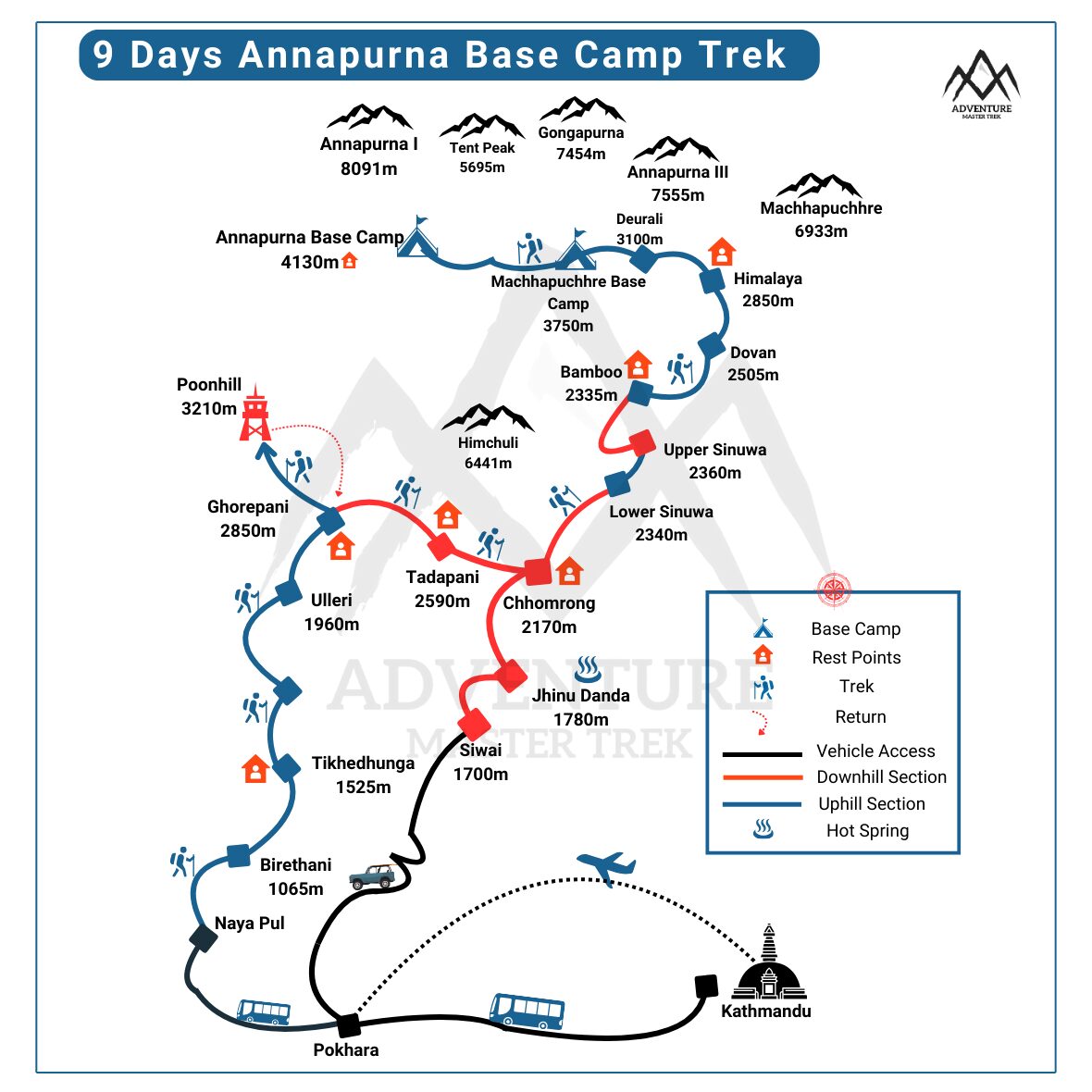
Good to Know
Your Journey, Step by Step
Food and Drinking Water
Food and drinking water are crucial factors to take into account when trekking to Annapurna Base Camp (ABC). Food served during the ABC trek is quite simple, powerful, and high-calorie meals to prepare your body for the physical demands of the journey. The teahouses and lodges along the route offer a variety of choices for food option.You will offered three-course meals: breakfast, lunch, and dinner. Dal bhat, momos, noodles, pasta, pizzas, sandwiches, French fries, noodle soup, rice porridge, and Tibetan bread are some of the basic foods available there. Teahouses also offer both local and Western food. They also offer snacks like energy bars, chocolates, biscuits, and nuts which are great for keeping energy in a long trek day. You will also get a variety of drinks such as black tea, fruit juices, green tea, and herbal teas like ginger tea or lemon tea, and coffee.
Safe drinking water is an important aspect of any trekking adventure, but it is especially important during the Annapurna Base Camp (ABC) trek. There are numerous water sources throughout the route, such as rivers and streams, although they might not be safe to drink. Thus, you can use water purification methods like boiling water, pills, and a UV sterilizer (Steripen). Although it can be expensive, the teahouses sell bottled water. But as it is not environmentally friendly, we recommend you drink boiling water from rivers. Therefore, it is advised that teahouses boil their water for a small cost. You must properly hydrate yourself for the lengthy hike by consuming three to four liters of water each day
Accommodation on Annapurna Base Camp (ABC) Trek
The accommodation on the ABC trek are simply teahouses which provide simple yet cozy lodging options. Beds, blankets, and hot meals are among the basic amenities offered by these teahouses but the quality of the amenities varies according to the location’s altitude and remoteness. Basic accommodations in teahouses include a twin bed, a mattress, a pillow, and a blanket. In general, they are reasonably priced, although the cost can increase as you trek higher. The chambers are less comfortable and more rustic at higher elevations, but they provide weather protection. For further warmth, it is strongly advised to pack your sleeping bag because temperatures can drop considerably, particularly at night. They are basic but sufficient for the trek.
Electricity and Internet Service in ABC trek
You can get both access to electricity and internet service in ABC trek, especially in lower altitudes. Guesthouses, teahouses, and lodges generally provide electricity for lights, charging devices, and other basic needs. The reliability of electricity decreases with increasing altitude. The majority of locations in the higher areas, like MBC and ABC, rely on hydropower or solar power, which might be unstable due to weather or capacity limitations. Electricity is still available in certain lodges, though it can be more periodic.
Many teahouses and communities have Wi-Fi or local mobile data networks that provide internet access.There is less internet service the higher you go on the route. Wi-Fi and internet services are available at some teahouses at MBC and Deurali, but the speed and stability of the connection may be poor. It can be quite limited so, use it for emergency conversations, location-checking, or important messaging.
Altitude Sickness in ABC trek
Altitude sickness can occur in the high-altitude places which passes 3000m in ABC trek such as Deurali (3,230 meters / 10,600 feet), Machapuchare Base Camp (MBC) (3,700 meters / 12,140 feet), and Annapurna Base Camp (ABC) (4,130 meters / 13,550 feet). There is a hgh risk of altitude sickness in this places but it can be avoided with proper planning, acclimatization, and attention to symptoms. You have to make sure to acclimate properly before ascending to the ABC trek.
Altitude sickness is not a minor problem during the trek. So, take things slow, pay attention to your body, and enjoy the journey. Most hikers only have minor symptoms, and they can continue without any problems if they pay close attention. It is more important to take care of your body rather than trek. So, make sure you follow proper precautions to avoid the risk of altitude sickness.
Group Size in ABC trek
The group size of Annapurna Base Camp varies depending on trekking objectives, comfort level, and individual preferences. You can go for solo trekking too. But it is recommended to trek with guide for better knowledge of trails. While larger groups of 15-20 provide more logistical support and cheaper expenses per person, smaller groups of 6-10 trekkers frequently offer the finest blend of flexibility, friendship, and cost-effectiveness. In the end, whether you go on a guided or individual journey, it’s critical to pick a group size that fits your preferred mode of transportation.
Difficulty in ABC Trek
Even though the Annapurna Base Camp (ABC) journey is regarded as a moderate trek, it can still be difficult, particularly for people who aren’t used to hiking in difficult terrain or at high elevations. The main challenges faced by trekkers include altitude, physical exertion, weather, and difficult terrain. However, most people with an average level of fitness can complete the walk with the right mindset, appropriate pace, and proper preparation. The inappropriate seasons can also cause difficulties in trekking. So make sure you go to trek in suitable seasons that offer clear skies, mild temperatures, and perfect views of the surrounding peaks. If you overcome such difficulties, it is a fulfilling adventure because of the breathtaking environment, cultural encounter, and sense of achievement at the base camp.
Safety and Security in Nepal and ABC trek
Nepal is one of the safest countries for trekking and traveling. For a better trekking experience in Nepal, you must prepare the proper procedures needed for the trek.
The Annapurna Base Camp (ABC) trek requires thorough planning and cautious attention to safety and security. There are risks associated with the trail, especially those connected to altitude, weather, and remote access, even though it is well-established and traveled by thousands of people annually. You may greatly increase your safety during the trek by being ready for altitude-related problems, keeping an eye on the weather and terrain, taking the required health precautions, and obtaining sufficient travel insurance. A porter or guide can add extra security by helping in navigating possible hazards and guaranteeing a safe and easy journey to Annapurna Base Camp.
Permits for ABC trek
A few permits must be obtained before you can start your trek to Nepal’s Annapurna Base Camp (ABC). The permits are necessary to make sure that hikers are protecting the environment, according to safety regulations, and helping out the local communities. The permits are:
- ACAP (Annapurna Conservation Area Project) Permit: To visit the Annapurna Conservation Area, one must have an ACAP permit. Obtained from NTB or the ACAP office.
- TIMS (Trekkers’ Information Management System) Permit: To ensure safety and respond to emergencies, this permit helps the authorities monitor the movements of trekkers within the area. Obtained from Nepal Tourism Board (NTB) office.
Required documents for the Permits
- Validated passwords for a minimum of six months
- A valid tourist visa for Nepal is available at Tribhuvan International Airport.
- Each permit requires two passport-sized pictures.
- A copy of the permits
- A copy of travel insurance that covers evacuation and high-altitude trekking
Money Exchange
You need to bring Nepali cash for your trip. You can exchange your money at a number of locations in Thamel, Kathmandu. Tribhuvan International Airport also offers currency exchange, albeit it costs a little more than the other locations. The hotels and teahouses along the route only accept Nepali rupees. For the tipping, you also need the cash. So make sure you take Nepali currency for your ABC trek.
Travel Insurance
It is important to have travel insurance while trekking in Annapurna Base Camp to ensure all unexpected events can be covered. Your insurance should cover emergency medical coverage, evacuation, protection for trip interruptions, lost gear, high-altitude trekking, trip delay, and rescue costs. These insurance helps in the peaceful and smooth running of trek for the better experience.
Trekking Equipment
Having the appropriate equipment is essential for safety, comfort, and enjoyment while planning a trekking trip, particularly in areas like the Annapurna Base Camp (ABC) or other Himalayan treks.
Here are some trekking equipment required for the ABC trek:
1. General
- Passport: For permits, include extra copies and passport-sized pictures.
- Trekking permits: The Annapurna Conservation Area Permit (ACAP) and the Trekker’s Information Management System (TIMS) card.
- Sleeping bag (for chilly nights, at least -15°C/5°F)
- Cash: Nepali rupees for modest purchases, snacks, and gratuities.
- Bags: Porters usually carry the duffel bag, which is used for your main luggage.
- Backpack: day backpack (for quick hikes with necessary items like water, camera, extra layers, and snacks) and main trekking backpack (for transporting food and sleeping bags).
2. Upper body
- Sunglasses (with UV protection)
- Sun hats, and woolen hats.
- Scarves/ Buff
3. Torso
- Base layers
- fleece or down jackets
- insulated jackets
- sweaters
- waterproof outer layers
4. Lower Body
- Trekking Pants
- Base Layer: Thermal bottoms for added warmth in cold weather.
- Hiking Shorts: For warmer sections of the trek.
- Comfortable Pants: For relaxing in teahouses.
- Waterproof Pants: Shields against rain and snow.
5. Hands
- Lightweight gloves (for warmth)
- Insulated and waterproof gloves (for colder weather)
6. Footwear
- Woolen Socks
- Sturdy trekking boots (waterproof, ankle support)
- Camp shoes or sandals (for resting)
- Flip-flops or sandals
7. Undergarments
- Moisture-Wicking Underwear
- Sports bra for women
- Thermal or Base Layer Bottoms
8. Medication and First Aid Box
- Altitude Sickness Medications like Diamox.
- Sunscreen & Lip Balm with high SPF
- Bandages
- Pain Relievers like Ibuprofen, Paracetamol
- Cough Syrup
- Antibacterial Cream eg. Neosporin
- Thermometer
9. Other Essentials
- Hand sanitizer
- Water bottles (carry 3-4 liters)
- Toiletries like toothbrushes, wet wipes, soap, etc
- Flashlights and Headlamp (with extra batteries)
- Towel
10. Optional
- Camera (for capturing the scenery with extra batteries)
- Trekking poles
- Snacks like chocolate, energy bars, nuts
- Power bank (for charging devices)
- Dry bags (for keeping things dry)
- Notebook or journal
- Earplugs and Eye mask
Cancellation Policy of ABC trek
1. Cancellation by the Guest
- 30 days before your departure: Full payment, excluding the cost of the bank transfer.
- 30 % of the total trip cost is reimbursed ten days before departure.
- There will be a 50% refund if you cancel five days or fewer before your trip.
- If you need to postpone or cancel your trip at the last minute, there won’t be any extra charges.
- There will be no reimbursement for any reason (such as personal illness, injury, or early return) after the trek has started.
2. Cancellation by the Company : You have the following options if the trek is canceled due to unanticipated events, natural disasters, or political unrest:
- Get a complete reimbursement of the trip price.
- Reschedule your trek to a later date.
3. Cancellations Due to Weather or Flight Delays
- We will try to reschedule your trip at no extra cost. If necessary, your trekking area will be modified.
- If you decide to cancel, you will receive a full refund of 30% of the total cost of your trip, excluding service fees for transportation, hotel reservations, and permits.
4. No-Show Policy
- If the guest unexpectedly fails to show up on their stated departure date, therewill be no refund.
5. Travel Insurance Requirement
- It is strongly advised to have comprehensive travel insurance that covers medical emergencies, evacuation costs, and trip cancellations.
Booking Policy in ABC trek
Our goal is to give our guests a seamless and adaptable booking experience.
The specifics of our ABC Trek reservation policy are listed below:
1. Advance Payment & Booking Confirmation
- A 30% down payment of the total trip cost is required to reserve your spot.
- The remaining amount can be paid when you get to Kathmandu.
- Another option is to pay the full amount up front.
To complete the reservation, you must send:
- The reservation fee
- A digital version of your passport
- Extra information that is needed, such as an emergency contact or travel insurance information.
2. Payment Methods
We offer a range of payment options for your convenience:
- Online Payment: To make a safe online payment, use the payment gateway on our website.
- Debit/Credit Cards: Visa, MasterCard, and other payment methods are accepted (a 4% bank service charge applies). Send funds directly to our bank account via bank or wire transfer(Transaction fee).
- Cash or Check: If you are in Kathmandu, you can choose to pay with cash or a check.
3. Final Payment
- Before departure, the remaining 70% of the trip cost must be paid. When you arrive, you can pay with cash, a card, or a bank transfer.
4. Booking Modifications & Rescheduling
- Please give us at least 30 days’ notice if you must change the date of your trek.
- Depending on the circumstances, date adjustments may be contingent upon availability and additional fees.
5. Travel Insurance Requirement
- Every trekker has to have full-coverage travel insurance that covers evacuation, high-altitude medical emergencies, trip cancellations, and delays.
6. Last-Minute Booking
- Although it is possible to schedule the trek at the last minute (up to 48 hours prior to departure), it is strongly advised that you do it in advance to ensure availability during busy months like September through November.
FAQs
Your Questions, Answered
What is the highest point on the trek?
The highest point of the ABC trek is Annapurna Base Camp situated at 4,130 meters (13,550 feet) from where you can witness the beauty of the Annapurna range up close.
What is the difficulty level of the ABC trek?
The ABC trek is moderate in difficulty with some long days of walking but the trail can be more steeper and more challenging as you ascend in higher altitudes.
When is the best time to do the ABC trek?
The best seasons to do the ABC trek are Autumn (Sept-Nov) and Spring (Mar-May). These seasons offer clear skies, mild temperatures, dry conditions, and great views of mountains like Annapurna I (8,091m), Annapurna South, Machhapuchhre, Hiunchuli, and Tent Peak.
Can beginners do this trek?
Yes, it’s suitable for beginners with good physical fitness.
Do I need a permit for the trek?
Yes, you need two permits: Annapurna Conservation Area Permit (ACAP) and Trekkers’ Information Management System (TIMS) Card which you can find in Nepal Tourism Board and the Trekking Agencies Association of Nepal.
What is the best time to visit?
The best time to visit is during the dry season, from April to October, when the weather is pleasant and ideal for outdoor activities.
Do I need a guide?
Yes, it is highly recommended to hire a guide for navigation, cultural insights, and trail safety.
How long do I trek each day?
You should trek typically 6-7 hours each day.
Can I trek solo trekking without a guide?
Solo trekking is allowed, but it’s recommended to trek with a guide, especially if you’re unfamiliar with high-altitude trekking.
Is there a risk of altitude sickness in the ABC trek?
Yes, there is a risk of altitude sickness in the ABC trek as you will be ascending an altitude of 4,130 meters (13,550 feet). So, you must follow proper precautions, hydrate your body, and acclimate properly.
Is Wi-Fi available during the trek?
Wi-Fi is available in some teahouses along the route, but it’s often slow and not available at higher altitudes.
What type of accommodation is available in the ABC trek?
Along the route, basic tea houses with shared rooms and common bathrooms are available.
What food is available on the ABC trek?
Tea houses offer traditional Nepalese meals like dal bhat, momos, noodles, and fried rice, as well as some Western dishes like pasta and pizza.
Are there any risks on the ABC trek?
Yes, there are some risks while trekking on the ABC trek. The main risks include altitude sickness, injuries from slips and falls (especially on steep sections), and weather conditions (rain or snow). So, follow proper precautions and avoid such risks.
Is there a phone signal on the ABC trek?
There is generally a phone signal up to Ghorepani and some sections, but the signal can be weak or unavailable at higher altitudes.
Can I rent trekking gear?
Yes, you can rent gear such as sleeping bags, trekking poles, and jackets in Pokhara or Kathmandu.
How cold does it get on the ABC trek?
At higher altitudes, especially at night, temperatures can drop to -5°C to 0°C (23-32°F), while daytime temperatures are typically 10-20°C.
View Our Similar Packages
Discover our top tours, loved by thousands of travelers annually. Choose the adventure that inspires you and embark on a journey tailored to your desires.







